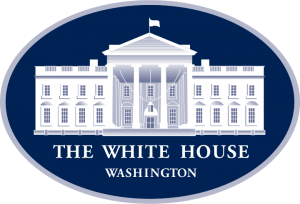 Today President Obama called upon all nonprofits, businesses, technology experts, and governments to connect 20 million more Americans to broadband by 2020. This goal, along with other supportive programs, was announced in a White House press release introducing the new ConnectALL initiative.
Today President Obama called upon all nonprofits, businesses, technology experts, and governments to connect 20 million more Americans to broadband by 2020. This goal, along with other supportive programs, was announced in a White House press release introducing the new ConnectALL initiative.
The ConnectALL initiative follows an announcement from the Federal Communications Commission (FCC) that the Regan-era Lifeline Program will be modernized to include a $9.25 broadband subsidy for low-income families. The Lifeline Program has long provided phone subsidies for low-income Americans. The proposed program overhaul is directed towards 64 million Americans who FCC Chairman Wheeler and Commissioner Cylburn say, “live on the wrong side of the digital divide.”
The announcement of the new initiative follows what the Obama Administration heralds as seven years of successful broadband growth. This growth is marked by a tripling of average home Internet speeds, expanding coverage to provide 98% of Americans with 4G/LTE mobile broadband, and doubling the number of schools connected to high-speed Internet. Previous initiatives, including ConnectED and ConnectHome, provided broadband access for 20 million K-12 students and 28 communities with families living in public housing.
Despite progress made, President Obama’s initiative underscores the importance of connecting Americans who struggle to afford access and also lack the tools needed to reap the economic benefits of high-speed Internet access. ConnectALL addresses both technology needs, as well as digital literacy training. In order to improve access to affordable devices, the General Services Administration (GSA) will be working to re-vamp a program that redistributes computers and other equipment no longer needed by federal agencies to nonprofits and schools. The Administration is also calling upon the Corporation for National and Community Service (CNCS) and Institute of Museum and Library Services (IMLS) to collaborate on a pilot program that places AmeriCorps VISTAs in libraries, museums, and community organizations that serve tribal and rural communities. The CNCS and IMLS, both federal agencies, will support VISTAs in efforts to build capacity and improve digital literacy in communities that struggle with access and adoption.
The White House press release included two accompanying documents. The first is a recommendation from the National Telecommunications and Information Administration (NTIA) that supports the FCC’s proposed Lifeline reform. In addition to this recommendation, the NTIA’s BroadbandUSA program is also launching an online assessment tool to help communities’ self-assess broadband needs and connect them with resources for the challenges they face. The Community Connectivity Initiative will enter its pilot stage with the help of 19 communities across the United States.
The second supplemental document is an issue brief on the economic importance of broadband. The Council of Economic Advisors prepared this new study that uses 2014 data to further analyze the economic effects of the digital divide. Findings include the fact that unemployed Americans without home Internet access take longer to find employment, and that online job tools are correlated with better labor market outcomes.
To read the full White House press release, click here.
To read the NTIA’s comments to the FCC, click here.
To read the FCC announcement of proposed Lifeline reforms, click here.
To read the new study on the economic value of broadband, click here.